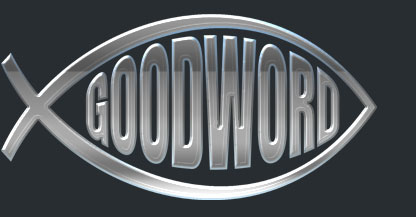| Host: | Brant Berglin |
|---|---|
| Guests: | James Ash |
| Quarter: | Allusions, Images, Symbols |
| Lesson: | 1 |
| Sabbath: | April 5th, 2025 |
Opening Question
If you believe in a God who knows the future, is that comforting to you? Why or why not?
Introduction
The lesson this week introduces the idea of God’s foreknowledge as the basis for prophetic messages. Christian doctrine often includes as part of theology proper (the study of “God,”) a belief in God’s omniscience. If God knows everything, then He knows the future as well. God’s knowledge of the future is fairly standard orthodox belief in most Christian denominations. However, there are some scholars who believe the future is unknowable, and thus God cannot know it. Also, questions of free will are seen at times to conflict with a knowable (and thus determined?) future.
There are indications in both Old and New Testaments that God knows the future, at least what He will do in reaction to human choices. Then, the lesson moves into some basic rules or principles of prophetic interpretation.
Understood or “Known”
The lesson asks us to read verses like Matthew 24:15, Revelation 1:3, Matthew 11:29, and Jeremiah 9:23, 24 and implies they’re all speaking about God wishing to be understood by what He says in the Bible. These verses do not exactly say what the author supposes; perhaps the very warnings he gives in this lesson might be better heeded throughout the quarterly!
To what degree does God make Himself known throughout scripture? Through the stories? Through the laws given to Israel in Leviticus and Deuteronomy? How does Deut. 29:29 contribute to our understanding of God’s revelation?
Reading the “Whole Bible” on a Topic
The Lesson invites us to compare scripture with scripture. Instead of just taking a Bible verse out of context, we should see what the whole Bible has to say about a given topic. This is an important part of Biblical interpretation, but it skips several vital steps that safeguard the verse’s meaning in the first place.
- Immediate Context: Reading the whole book and section around our verse is essential. A Bible verse does not have meaning outside its original context. If, for instance, one reads Revelation 13:2-3 and sees an amalgamated beast made up of lion, bear, leopard and other components such as horns and crowns, we may be immediately drawn back to Daniel 7. And while the beast-allusion is certainly from there, Revelation is also telling a story, too. How is this beast in ch. 13 related to the Dragon’s work in ch. 12? How is this beast going to be mimicked by the 2nd beast in ch. 13? What is the beast’s role in Revelation’s narrative? This is the first step—the immediate context!
- Genre: know the style of literature of the passage we’re investigating. Is it apocalyptic prophecy? Classic prophecy? Is it poetry? Law? Narrative? This may have an impact on meaning. When Abraham offered his son Isaac in Genesis 22, the narrative gives no obvious evidence that the story would be prophetic or typological in nature. Instead, it teaches us about Abraham’s faithfulness and God’s willingness to provide what Abraham needed most. But as time goes on, and God reveals more of Himself and His plan of Salvation, the narrative takes on extended meaning such that Jesus “fulfills” the historical narrative of Isaac’s “binding.” Also, interpretations that align within a given genre should be considered first. Revelation’s ties to Daniel provide stronger links than would the writings of Paul.
- Toto Scriptura: we read the rest of the Bible. The whole Bible does indeed give us clues, and should be used to interpret ideas, but only after the first two steps are done.
What are the dangers of ignoring these steps? What can happen if we jump too quickly from one verse or symbol to a different book without considering the immediate context? On the other hand, what happens if readers never consider the rest of the Biblical material?
Why Symbols?
Without question, God uses symbols. There are many reasons for this. First, symbols are like pictures, and as such, they are easily remembered and paint 1,000 words. Second, symbols require both sides of the brain to work, and like parables (extended symbolism), require thought and consideration. Also, as the lesson notes, the material in Daniel and Revelation addresses the rise and fall of kingdoms, powers, and nations, making it possibly politically seditious to leaders protective of their power. Again, like the parables of Jesus, they are intended to be understood by “insiders,” but a mystery to those on the outside.
Identifying Symbols
While many symbols are obvious in prophetic material, not all readers are agreed. Many evangelicals attempt to read apocalyptic as literally as possible, and often require symbols to be interpreted as physically as possible. The locusts in Rev. 9 are seen as helicopters, the horses are tanks, and the beast in ch. 13 is a single literal person, the antichrist himself, rather than a system, power, kingdom or principality.
But Adventists have frequently interpreted the Holy City in Rev. 21-22 as a literal city as described with gold and gems. But what if it is also symbolic, or at the least has symbolic features? Why would a modern city with no evil need a city wall? And why the specific dimensions related to the 144,000 from ch. 7, just larger? And a city as tall as it is wide? This seems more symbolic than literal, yet many Christians still hope for streets of gold.
What is the danger of misidentifying the symbols in prophetic material? Which is more detrimental, to miss a symbol or to symbolize what should be literal
Closing Comments
Throughout the quarter, we’ll continue to examine tools and steps of interpretation.




